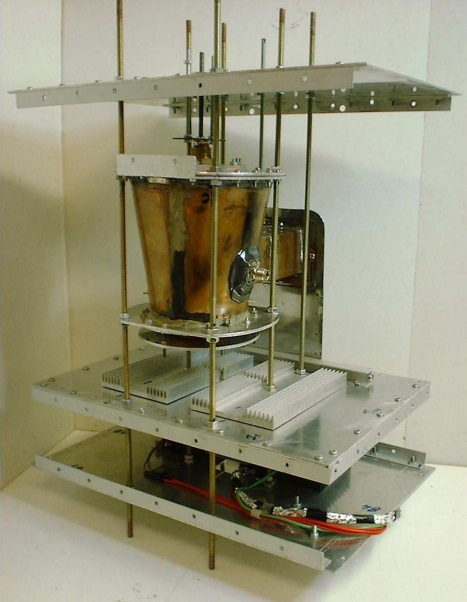I have discussed a number of actual and theoretical engines to be used for spacecraft in this blog. There is a category of space drives that I have not discussed because they are wild speculation about designs that in some way defy well known physical laws which makes their construction and use highly improbable to say the least. Lately, I have been reading about some experiments that some researchers say could lead to an extraordinarily efficient drive system. I have held off posting about this proposed space drive but finally decided that I should say something about it because of all the publicity that the research has been getting lately.
The basic premise of engines used to propel spacecraft is that something has to be thrown out the back of the engine to cause the craft to move forward. It can be hot gases from explosions. It can be cold gas from canisters. It can be steam. It can be ions propelled by electrical fields. But they are all just examples of action and reaction from Newtonian physics. Now we are hearing about a process that is supposed to provide thrust with nothing being expelled from the engine.
In 2001, Roger Shawyer, an aerospace engineer, designed the EmDrive. Since then he and his company, Satellite Propulsion Research, have been promoting the concept. Guido Fetta, a chemical engineer designed the Cannae Drive which is based on the same ideas as the EmDrive. These proposed engines supposedly produce thrust without the consumption of a propellant.
Other teams of researchers have built prototypes of these engine designs. The institutions involved include Northwestern Polytechnical University in China, a NASA Eagleworks laboratory in the U.S. and Dresden University of Technology in Germany. Each of these teams reported a small amount of thrust generated by their engines but the German team said that it was within the range of experimental error. Researchers continue to work on the engines to eliminate errors and answer critics complaints.
The basic design consists of a closed metal chamber into which is injected microwaves. The chamber is a cylinder that is bigger at one end than the other. Shawyer claims that a standing wave interference pattern of microwaves is generated in the chamber. This setup could be called an RF (for radio frequency) cavity resonator. He says that the "stress energy" of space is altered inside the cavity by the effect of the geometry on the interference wave pattern. One researcher suggests that the standing wave is passing out of the chamber. If all the microwaves stay in the chamber, there is no conventional theory of physics that can explain how any thrust could be generated.
The magazine New Scientist published an article by Shawyer about a second version of his engine in 2006. There was a harsh backlash from critics who said that the magazine was not clear enough that the claims Shawyer made violated well-known physical laws such as conservation of momentum. The magazine apologized and printed letters from critics of Shawyer.
To date, these prototype RF cavity resonator engines show tiny amounts of thrust insufficient for use in spacecraft. Shawyer and other promoters of these engines will have to significantly raise their output before they can be of any use in space, if that is possible. Critics are unlikely to be impressed unless some theoretical framework can be developed that could explain exactly how these engines could work. On the other hand, reality does not have to adhere to our theories and if a working EmDrive with a useful amount of thrust can be constructed and demonstrated, then it will be used whether we understand it or not.
Northwestern Polytechnical University prototype EmDrive:
